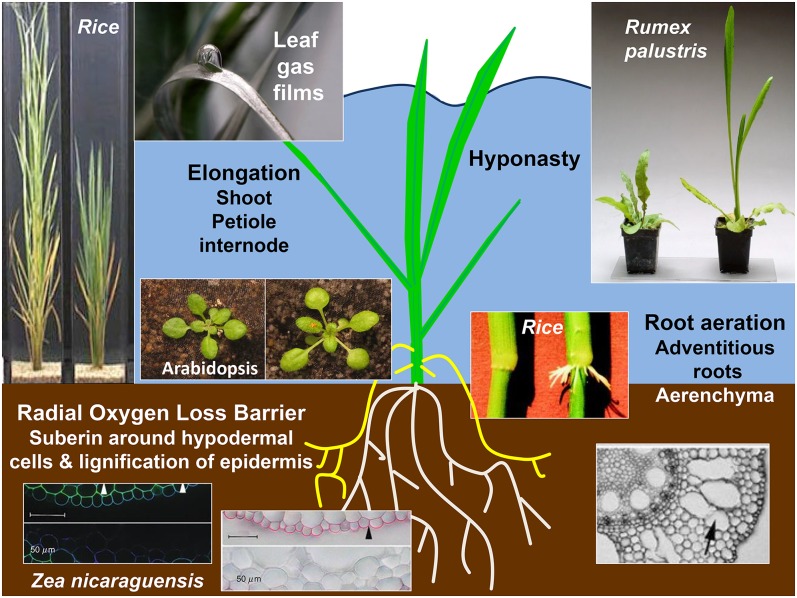Figure 2.
Examples of survival traits displayed in flooded plants. Elongation growth response: deepwater (left) and lowland (right) rice cultivars after 7 d of partial submergence showing distinctions in internode elongation (Hattori et al., 2009); Arabidopsis (Columbia-0 ecotype) after 3 d of complete submergence in darkness showing petiole elongation (Mustroph et al., 2010); and 6-week-old R. palustris plants grown in air (left) or submerged for 14 d (right) showing petiole elongation (Colmer and Voesenek, 2009). Root aeration: adventitious root formation at the third internode in deepwater rice without (left) and with (right) ethephon treatment (Mergemann and Sauter, 2000); and increased lysigenous aerenchyma after 14 d of stagnant waterlogging (Abiko et al., 2012). Radial oxygen loss barriers formed after 14 d of stagnant waterlogging include suberin deposition in cell walls of hypodermal/exodermal layers and lignin deposition on outer epidermis. Z. nicaraguensis root images are 60 mm from the tip of an adventitious root. Leaf gas films cling to the surface of leaves of many semiaquatic species (Winkel et al., 2011).

